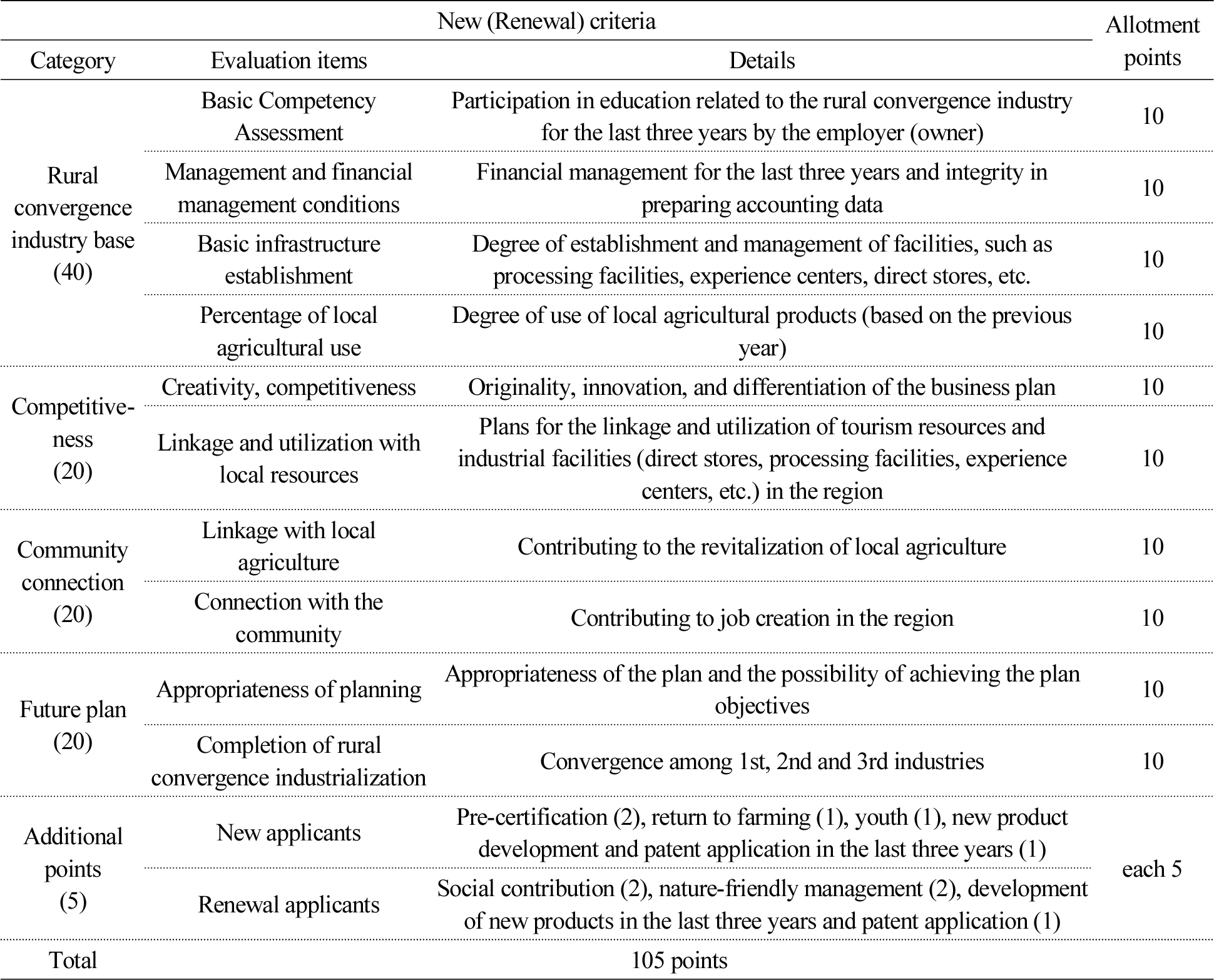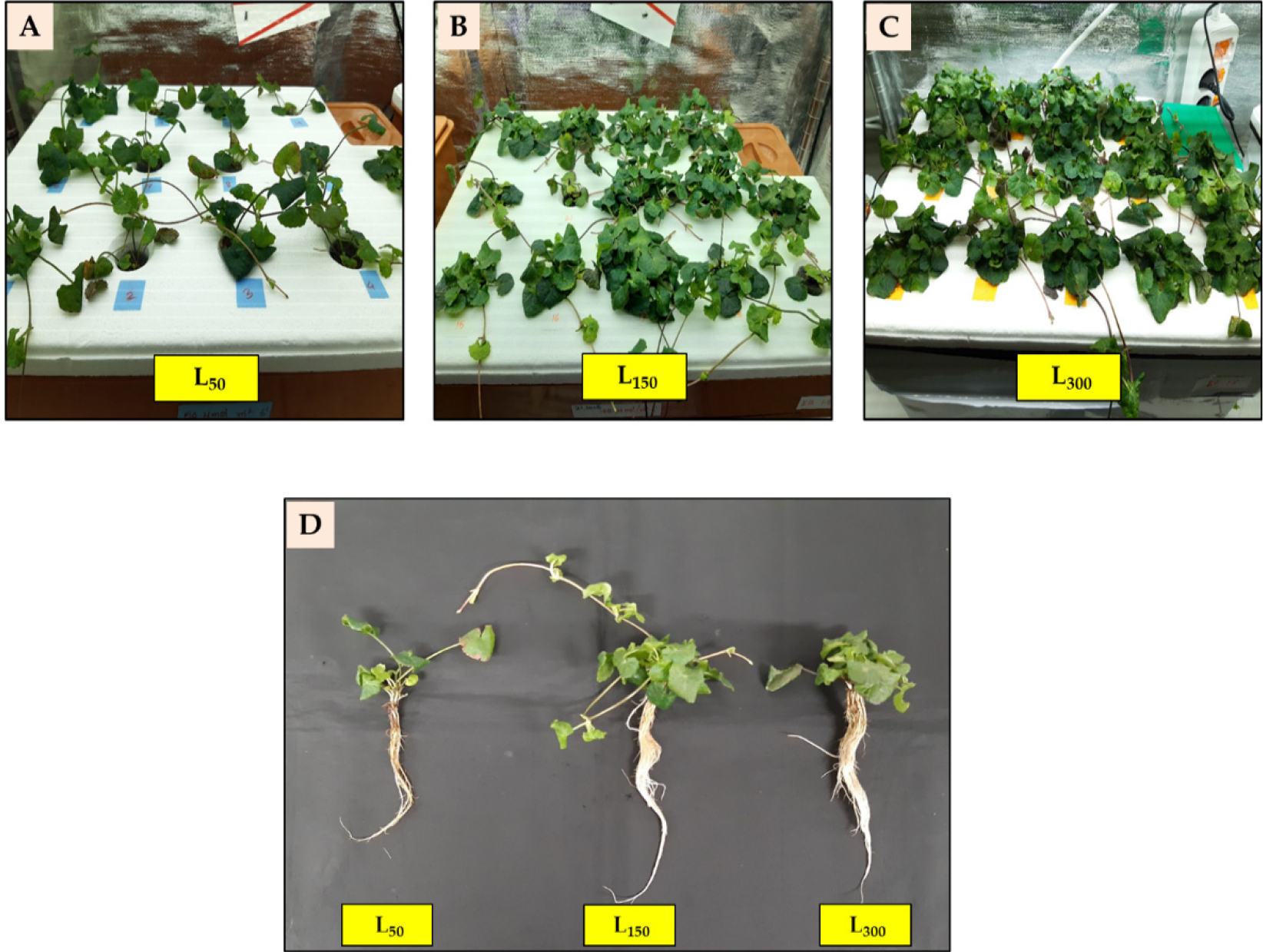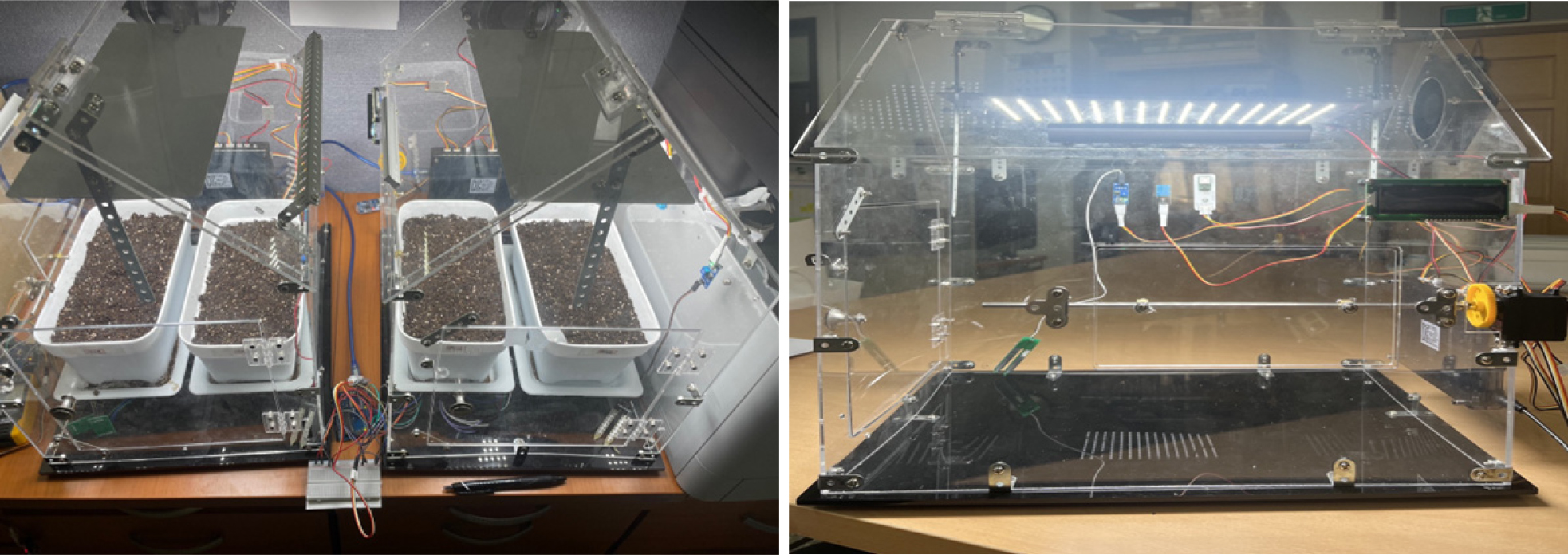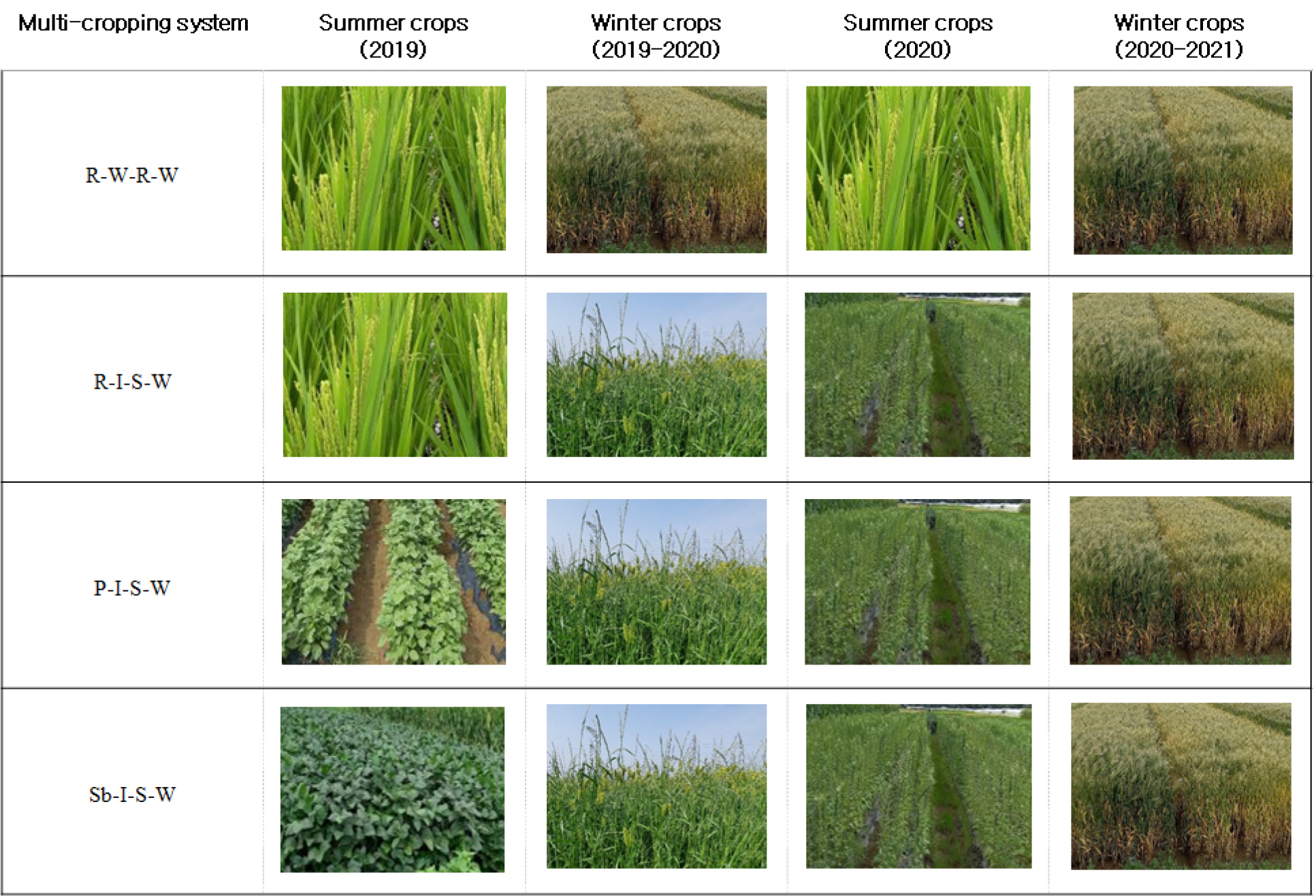-
Research Article

- Analysis of the Effects of the Rural Convergence Industry Policy on Regional Agricultural Economy
- Yunmi Hwang, Jonghwa Kim
- The rural convergence industry (RCI) is a key strategy for enhancing the productivity and competitiveness of regional agriculture and promoting sustainability. This …
- The rural convergence industry (RCI) is a key strategy for enhancing the productivity and competitiveness of regional agriculture and promoting sustainability. This study analyzed the effects of the RCI policy on the regional economy using a fixed-effects two-stage least squares (FE-2SLS) model. The analysis revealed that an increase in the number of certified RCI operators positively impacts the agricultural, forestry, and fishery gross regional domestic product (GRDP) by 3.1 billion won. This suggests that the RCI contributes positively to agriculture-related economic activities. However, a trend was observed in which an increase in the proportion of small farmers correlates with a decrease in the agricultural, forestry, and fishery GRDP. This indicates that while the participation of small farmers enhances the policy’s effectiveness, their low productivity limits their economic contribution. Based on these findings, this study suggests the need for promoting inter-industry convergence and providing practical support for small-scale farmers. - COLLAPSE
-
Research Article

- Artificial White LED Light Influences Plant Growth and Centelloside Accumulation of Centella asiatica Grown in a Hydroponic System
- Md Rayhan Ahmed Shawon, Md Obyedul Kalam Azad, Byeong Ryeol Ryu, Jong Kuk Na, Ki Young Choi
- Centella asiatica is a perennial medicinal herb, a rich source of triterpenoids including centelloside (asiaticoside, madecassoside, asiatic acid, and madecassic acid). Light …
- Centella asiatica is a perennial medicinal herb, a rich source of triterpenoids including centelloside (asiaticoside, madecassoside, asiatic acid, and madecassic acid). Light intensity is an important factor that enhances plant growth and the accumulation of these triterpenoids in C. asiatica. The objective of this study was to investigate the optimal light intensity that enhances the growth of C. asiatica and centelloside accumulation. The plants were hydroponically grown using the nutrient film technique for four weeks under three different light intensities of white, fluorescent light at 50 (L50), 150 (L150), and 300 (L300) photosynthetic photon flux density (PPFD), maintaining a 16/8 h light/dark cycle with relative humidity at 65 ± 5%. The results revealed that morphological features of C. asiatica such as petiole length, number of leaves, leaf area, number of runners, shoot fresh weight, and shoot dry weight were significantly higher in plants treated with L150. However, the highest content of asiaticoside, madecassoside, and asiatic acid was observed in L300-treated plants. Additionally, principal component analysis (PCA) indicated that the number of leaves, leaf area, shoot fresh weight, and SPAD value are positively correlated. These results suggest that although the L300 treatment hinders the morphological development of C. asiatica, it is preferable for centelloside biosynthesis. - COLLAPSE
-
Research Article

- An Analysis of the Bacterial Diseases Outbreak on Apple and Asian Pear in Gangwon State in 2021-2023
- Heon-Seop Won, Youn-Gi Moon, Gwang-Jae Lee, Jae-Hong Lee, Se-jeong Hwang, Sung-Hee Kang, Seung-Min Ham, Sun-Joo Lee, Seung-Jae Lee, Duck-Hwan Park
- This study conducted a comprehensive analysis of the temporal and regional characteristics of fire blight (Erwinia amylovora) and black shoot …
- This study conducted a comprehensive analysis of the temporal and regional characteristics of fire blight (Erwinia amylovora) and black shoot blight (Erwinia pyrifoliae) outbreaks in Gangwon State from 2021 to 2023. Fire blight was first observed in Wonju, Pyeongchang, and Yeongwol in 2021. The introduction of infected seedlings was identified as a major factor contributing to the spread in Yeongwol, while in Pyeongchang and Wonju, climatic conditions, such as temperature and humidity, were found to significantly promote the outbreaks. In 2022, fire blight occurred in Wonju, Pyeongchang, and Hongcheon, where the first recorded simultaneous occurrence of fire blight and black shoot blight was observed, complicating disease control measures. In 2023, new fire blight cases were reported in Jeongseon and Yanggu, with young trees in Yanggu exhibiting increased susceptibility, leading to concentrated infections. The rapid growth of shoots and flowers facilitated pathogen spread, resulting in a rapid escalation of disease incidence. Black shoot blight was first detected in Wonju and Chuncheon in 2021, with unsanitary use of farm tools identified as the primary factor for disease spread. In 2022, additional cases were reported in Yeongwol and Chuncheon; however, the disease remained confined to isolated orchards, particularly in Chuncheon, where no further spread to surrounding orchards was observed. In 2023, black shoot blight emerged in Hwacheon, where inadequate orchard management and lack of farmer education accelerated the spread of the disease. This study provides crucial information for understanding the occurrence and influencing factors of fire blight outbreaks in Gangwon State. Establishing preventive measures, continuous pattern analysis, and proactive surveillance are essential to mitigate the spread of bacterial diseases in orchards. - COLLAPSE
-
Research Article

- Confirmation of Lettuce Growth Differences and Growing Substrate Changes According to Unused Agrobyproduct Biochar
- Seon Yeop Kim, Jae Youl Shin, Ha Eun Kim, Sunyong Park, Kwang Cheol Oh, Seok Jun Kim, La Hoon Cho, Dae Hyun Kim
- Biochar, a carbon-rich material derived from biomass pyrolysis at high temperatures under oxygen-limited conditions, is recognized for its benefits in growing substrate …
- Biochar, a carbon-rich material derived from biomass pyrolysis at high temperatures under oxygen-limited conditions, is recognized for its benefits in growing substrate improvement, water retention, nutrient supply, and carbon sequestration. This study investigated the effects of biochar application on lettuce growth. Biochar was produced from bamboo, coffee grounds, and coconut peat through pyrolysis at 500°C for one hour. It was incorporated into the growing substrate at a 5% (w/w) ratio, and lettuce was cultivated for three weeks. Environmental factors, including temperature, humidity, and CO2 concentration, were monitored using sensors during the cultivation period. The results revealed that lettuce growth was most pronounced in growing substrate amended with coconut peat biochar, achieving a length of 84 mm and width of 51 mm, compared with the control group, which exhibited a length of 45 mm and width of 24 mm. Statistical analysis using a t-test confirmed that the growth differences between biochar-treated growing substrates and the control group were significant (p < 0.05), particularly for coconut peat biochar. All biochar-treated growing substrates promoted greater lettuce growth than the control, suggesting that biochar application creates a favorable environment for crop development. This study confirms that biochar is an effective growing substrate amendment for lettuce cultivation. Further investigations are needed to evaluate its broader applicability across diverse crops and environmental conditions. - COLLAPSE
-
Research Article

- Grain Yield of Winter Wheat (Triticum aestivum L.) and Soil Quality under Long-term Multi-cropping Systems on the Paddy Fields
- Seo Young Oh, Jong Ho Seo
- This study examined the growth characteristics and yield of wheat in multiple cropping systems with field crops using paddy fields in the …
- This study examined the growth characteristics and yield of wheat in multiple cropping systems with field crops using paddy fields in the southern plain region, and proposed an appropriate cropping system. The multiple cropping system with field crops, which included rice-alternative crops, increased the pH of the paddy soil as well as the contents of organic matter, available phosphorus, K+, Ca2+, and Mg2+. The number of spikes and seed yield per unit area were higher in the perilla-IRG-sesame-wheat, soybean-IRG-sesame-wheat, and rice-IRG-sesame-wheat cropping systems compared with the rice-wheat-rice-wheat system, particularly in the systems containing sesame and soybean. Although the heading date and maturity date of ‘Jokyoung’ wheat were 2-3 days later than that for ‘Geumgang’ wheat, its seed yield was higher by more than 80 kg/10a than that of ‘Geumgang’ wheat, suggesting that, in the southern region, the cultivation of ‘Jokyoung’ wheat could be more advantageous in terms of grain productivity. However, the protein content of the ‘Jokyoung’ wheat was low, below 10%, therefore, more ways to increase its protein content should be explored. Based on the results, to increase wheat yields in the southern region’s paddy fields, multi-cropping systems that include field crops such as perilla-IRG-sesame-wheat or soybean-IRG-sesame-wheat could be more suitable than the rice-wheat-rice-wheat rotation. Ultimately, field crop-based multi-cropping systems positively could impact the soil’s physicochemical properties, and this, in turn, could enhance crop growth and grain yield. - COLLAPSE
Journal Informaiton
 Journal of Agricultural, Life and Environmental Sciences
Journal of Agricultural, Life and Environmental Sciences
 Journal of Agricultural, Life and Environmental Sciences
Journal of Agricultural, Life and Environmental Sciences



